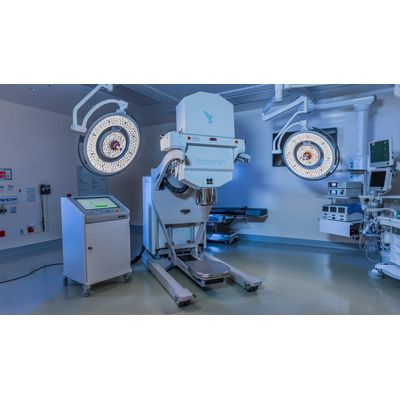

- Home
- Companies
- IntraOp Medical, Inc.
- Applications
- Intraoperative Radiation Therapy (IORT) ...

Intraoperative Radiation Therapy (IORT) System for Pancreatic Cancer Treatment - Medical / Health Care - Clinical Services
Surgery isn’t an option for every patient diagnosed with pancreatic cancer. But with the IntraOp® Mobetron® and electron IORT, more patients than ever before are eligible. And we know that those who are treated surgically have a higher chance of survival.
As an oncologist, you also know that pancreatic cancer has been winning. Despite the improvements made in the fields of surgery, chemotherapy and radiation therapy, pancreatic cancer remains one of the most lethal malignancies facing patients and physicians today. In fact, pancreatic cancer is the fourth most common cause of death from cancer among men and women. Median survival rates of five years or more are nothing short of dismal. Rates of recurrence and relapse demonstrate a sobering reality.
Pancreatic surgery requires incredible precision and even when augmented with radiation, the cancer retains the upper hand in most patients’ battle with the disease. The evidence concludes that surgery is the best chance for a cure and yet for so many patients, there is no surgical option. Why? Well, given the nature of the disease, it is estimated that 40% of patients present with locally-advanced unresectable or borderline resectable case. According to the recent publication “Intraoperative Radiotherapy in the Era of Intensive Neoadjuvant Chemotherapy and Chemoradiotherapy for Pancreatic Adenocarcinoma”, at presentation only 10-20% of patients with pancreatic adenocarcinoma have potentially resectable cancers. Even with resection, only 3-16% of patients from one selected clinical study series survived five or more years.
In most cases, it’s a matter of time.
But Mobetron presents a compelling new strategy in the fight against pancreatic cancer. Used by the leading cancer physicians and radiation oncologists in the world’s most innovative and trusted hospitals, clinics and academic centers, the Mobetron is the first portable, self-shielded electron linear accelerator designed to deliver Intraoperative Radiation Therapy (IORT) to cancer patients during surgery.
For surgical oncologists, Mobetron serves a critical collaborative role in efficiently and effectively delivering an ablative dose of radiation directly to the tumor bed at the optimal biologic time. This ensures confidence among surgical specialists that targeted microscopic and residual cancers have been managed during the intervention and that the procedure has effectively expanded the margins of tissue treated locally. Mobetron is powerful peace of mind.
With Mobetron, the physics of electron IORT results in greater precision, greater control and greater promise. While Mobetron has a proven history of treatment of breast and other cancer indications, in pancreatic cancer, the numbers are more than encouraging. For surgical and radiation oncologists alike, Mobetron provides a unique advantage.
Because advanced progression in local tumors causes greater morbidity and mortality among pancreatic cancer patients, significant attention has been paid to the role of localized radiation therapy. The approach has resulted in improved outcomes, but even then, rates of failure can be as high as 50 to 80%. And the location of the pancreas and its proximity to bone marrow, spinal cord, kidneys, liver and intestines means that precision is critical. IORT with electrons makes surgery possible for more patients. Having treated more than 2,000 patients with pancreatic cancer, Mobetron is the standard in IORT.
- 55,400 new diagnoses in 2018 55,400 new diagnoses (29,200 men and 26,240 women) of pancreatic cancer in the US in 2018
- 44,330 estimated deaths this year 44,330 people (23,020 men and 21,310 women) will die of pancreatic cancer in 2018
- 40% unresectable or borderline 21,228 of those diagnosed (40%) are locally-advanced unresectable or borderline resectable
- 4th commonest cause of cancer death Pancreatic cancer is the fourth most common cause of death from cancer in men and women
- Combined 3% of all cancers combined Pancreatic cancer accounts for about 3% of all cancers combined in the United States
- Accounts for 7% of all cancer deaths Pancreatic cancer is responsible for about 7% of all combined cancer deaths among men and women
- 12-15% months median life expectancy Patients have median life expectancies of only 12-15 months without adjuvant therapy
- 10% survival rate over 5 years 5-year survival rate of patients with resected pancreatic adenocarcinoma is approximately 10%
- Relapse timetables are relatively brief Relapse occurs within 9-15 months after initial presentation
- Recurrence is frequent Recurrence and/or metastatic disease develops in majority of resection patients
- Recent studies show little improvement Only 3–16% of patients (in one recent clinical study) survived 5 years or more
- Yet, IORT is showing promise Median OS was 35.1 months for patients who received IORT in addition to resection
